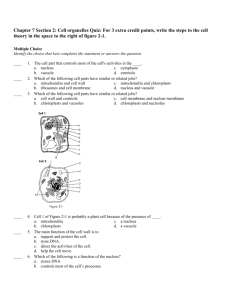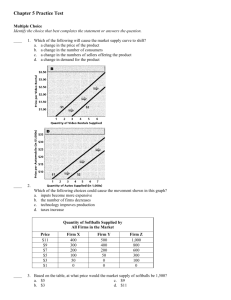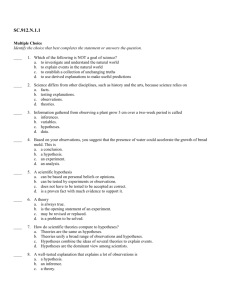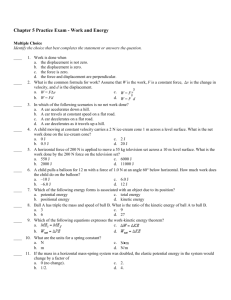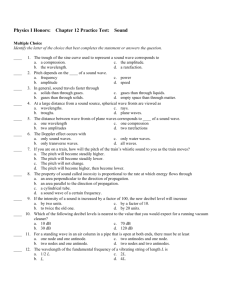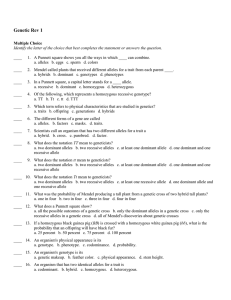10.3 HBQA - Magrin Science
advertisement
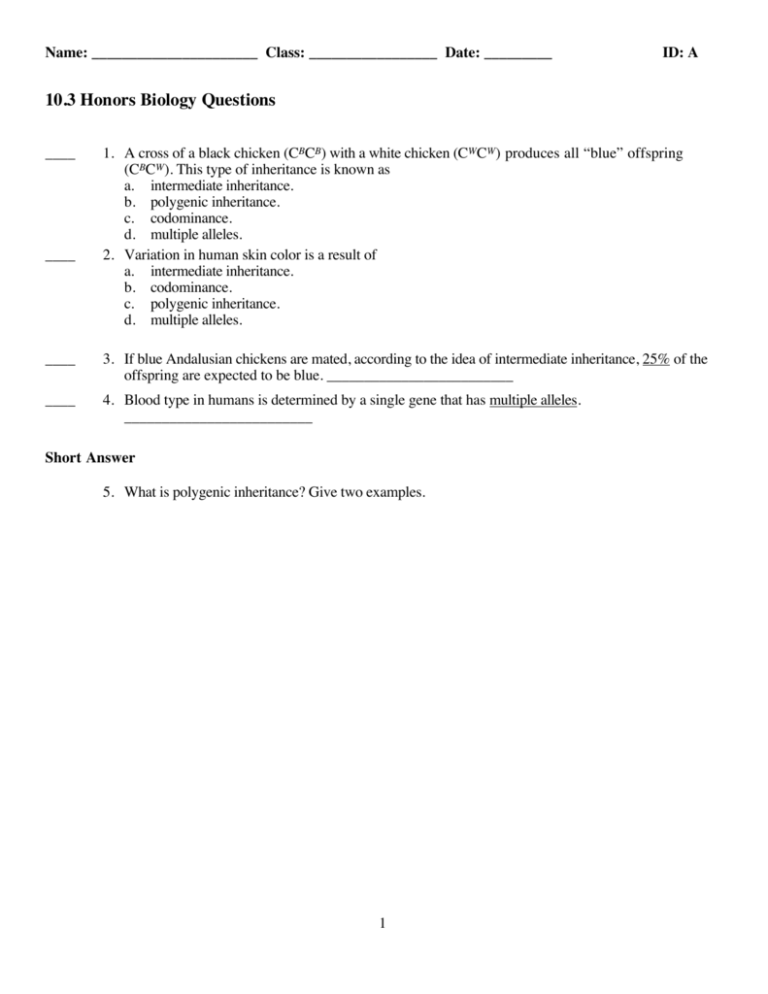
Name: ______________________ Class: _________________ Date: _________ ID: A 10.3 Honors Biology Questions ____ ____ 1. A cross of a black chicken (CBCB) with a white chicken (CWCW) produces all “blue” offspring (CBCW). This type of inheritance is known as a. intermediate inheritance. b. polygenic inheritance. c. codominance. d. multiple alleles. 2. Variation in human skin color is a result of a. intermediate inheritance. b. codominance. c. polygenic inheritance. d. multiple alleles. ____ 3. If blue Andalusian chickens are mated, according to the idea of intermediate inheritance, 25% of the offspring are expected to be blue. _________________________ ____ 4. Blood type in humans is determined by a single gene that has multiple alleles. _________________________ Short Answer 5. What is polygenic inheritance? Give two examples. 1 Name: ______________________ ID: A Other USING SCIENCE SKILLS Figure 10-4 6. What do the letters R and I represent in Figure 10-4? . 7. In Figure 10-4, what is the genotype of the red-flowered snapdragons? . 8. Explain whether the alleles in Figure 10-4 show dominance, intermediate inheritance, or codominance. . 9. According to Figure 10-4, if red-flowered snapdragons and ivory-flowered snapdragons are crossed, what percentage of their offspring would be expected to be pink-flowered? . 2 Name: ______________________ ID: A 10. According to Figure 10-4, if two pink-flowered snapdragons are crossed, what percentage of their offspring would be expected to be pink-flowered? . 11. How can environmental conditions affect phenotype expression? . 12. Explain the difference between intermediate inheritance and codominance. 3 ID: A 10.3 Honors Biology Questions Answer Section MULTIPLE CHOICE 1. ANS: OBJ: 2. ANS: OBJ: C 10.3.1 C 10.3.3 PTS: NOT: PTS: NOT: 1 core 1 core DIF: Below average/Average DIF: Average/Above average DIF: Average/Above average MODIFIED TRUE/FALSE 3. ANS: F, 50% PTS: NOT: 4. ANS: OBJ: 1 core T 10.3.2 PTS: 1 OBJ: 10.3.1 DIF: Below average/Average NOT: core SHORT ANSWER 5. ANS: Polygenic inheritance is a situation in which two or more genes affect a single character. Two examples in humans are height and skin color. PTS: 1 NOT: core DIF: Below average/Average OBJ: 10.3kt OTHER 6. ANS: R represents the allele for red flowers. I represents the allele for ivory flowers. PTS: 1 DIF: Below average/Average 7. ANS: The genotype of the red-flowered snapdragons is RR. OBJ: 10.3.1 PTS: 1 DIF: Below average/Average OBJ: 10.3.1 8. ANS: The alleles show intermediate inheritance, because a cross between red-flowered snapdragons and ivory-flowered snapdragons produces snapdragons with an in-between trait—pink flowers. PTS: 1 DIF: Average/Above average 1 OBJ: 10.3.1 ID: A 9. ANS: One hundred percent of the offspring would be expected to be pink-flowered. PTS: 1 DIF: Average/Above average OBJ: 10.3.1 10. ANS: Fifty percent of the offspring would be expected to be pink-flowered. PTS: 1 DIF: Average/Above average OBJ: 10.3.1 ESSAY 11. ANS: The product of a genotype is generally not a single, rigidly defined phenotype, but a range of possibilities influenced by the environment. For example, in humans, nutrition affects height, exercise affects build, and exposure to sunlight darkens the skin. PTS: 1 DIF: Below average/Average OBJ: 10.3.4 NOT: core 12. ANS: In intermediate inheritance, one allele is not completely dominant over another. As a result, the heterozygous phenotype is intermediate between the two homozygous phenotypes. In codominance, both alleles are dominant. As a result, the heterozygous phenotype is a combination of each homozygous phenotype. PTS: 1 DIF: Below average/Average 2 OBJ: 10.3kt



